[ad_1]
Augmented reality (AR) and virtual reality (VR) are two dynamic technologies that have gathered the attention of marketers in the rapidly changing field of digital marketing, redefining the way brands communicate with their audiences. By enabling a fluid dance between the digital and the physical, these technologies are doing more than just changing the rules of the game. Come along on a journey to discover the magic that happens when digital marketing, AR, and VR combine.
Why AR and VR is The Future of Marketing?
Imagine this; when you browse through your preferred social media platform, an augmented reality filter appears, instantly transforming your face into a comical character. This is only a small example of how Augmented Reality is erasing limits between the digital and the real world. By bringing interactive digital elements to real-world experiences, AR improves them beyond VR, which transmits people to completely digital content.
For marketers, AR is a dynamic tool that turns passive content consumption into an engaging interaction. Whether it’s the playful filters on social media, an interactive product packaging experience, or a captivating in-store adventure, AR invites consumers to actively participate in the brand story.

Conversely, VR takes users to a world that is beyond the physical. With VR, users could lose themselves in stories and become more than just viewers—they become an essential part of the narrative. Imagine entering a virtual showroom, using a simulated environment to evaluate products, or even taking a virtual tour to distant locations. The secret to VR’s power is its capacity to create strong feelings, which are the basis of customer loyalty.
The combination of AR and VR is where the real adventure begins. Together, these technologies build an ecosystem that enables brands to provide seamless, comprehensive experiences. Imagine the following: an augmented reality app enables users to scan a product to unlock a virtual reality experience that takes them into the brand’s narrative or takes them on a virtual tour of the product’s development. This combination increases the impact in projects involving digital marketing. Brands may engage viewers across multiple channels and leave an enhanced and lasting impression by adding AR components to traditional commercials or using VR to extend the narrative.
E-commerce has found a particularly sweet spot for AR. Imagine a world in which consumers can virtually try on clothing or see furniture arranged in their living rooms before clicking the “purchase” button. By eliminating doubts and increasing customer confidence, AR turns online buying into an immersive experience. Digital marketers can benefit from a customized and engaging customer experience by integrating AR into e-commerce platforms. The option to “try before you buy” benefits both customers and brands by increasing customer happiness and reducing return rates.
Creating experiences that people will remember is the fundamental goal of the partnership between AR, VR, and digital marketing. It’s about going beyond traditional marketing while creating consumer-lasting moments. A deeper effect is produced by the realistic VR experience and the interactive aspect of AR, which eventually leads to increased brand loyalty.
AR and VR: Numbers in Focus
After briefly talking about AR and VR, and before moving on to the case studies we, as Multiplayer Agency, have examined on this subject, let’s focus on some statistics provided by Statista that have happened in recent years and are expected in the future.
The market for virtual reality (VR) and augmented reality (AR) is expected to reach US$32.1B in revenue in 2023, indicating significant growth prospects. It is projected that this growth will continue at a remarkable annual rate of 12.60%, with a market volume forecast to reach US$58.1B by 2028. AR Software is the market leader in this industry, with an estimated worth of US$11.9B in 2023. In terms of revenue generation, the US leads the pack with a projected $8,568.0M market volume in 2023. By 2028, the AR and VR markets are projected to have 6,887M global users, reflecting how widely these technologies are being used.
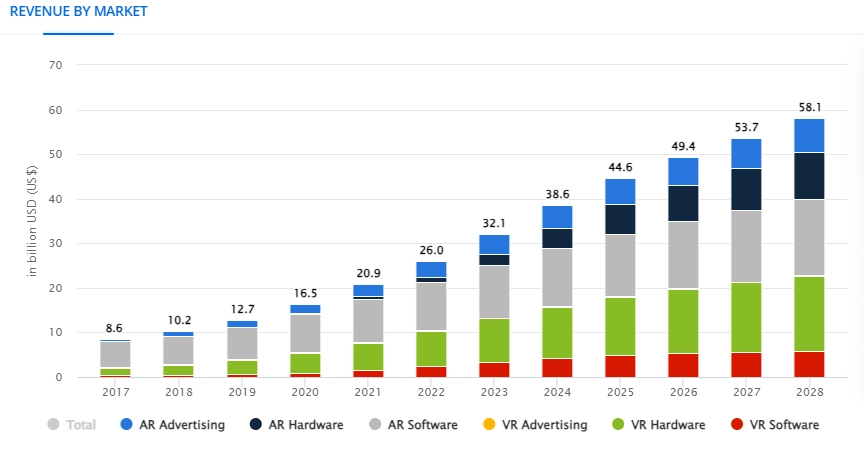
Source
The AR and VR market has experienced significant growth on a global scale, with the US and China leading the standard for innovation and widespread adoption.
When we look at the general map, we can see how AR VR technology has gained momentum and that what it is now is just the beginning of the next short period. When we look at advertising, where our work is supported and focused on with case studies, we will see a leap in this field in the future, just like the general figures.
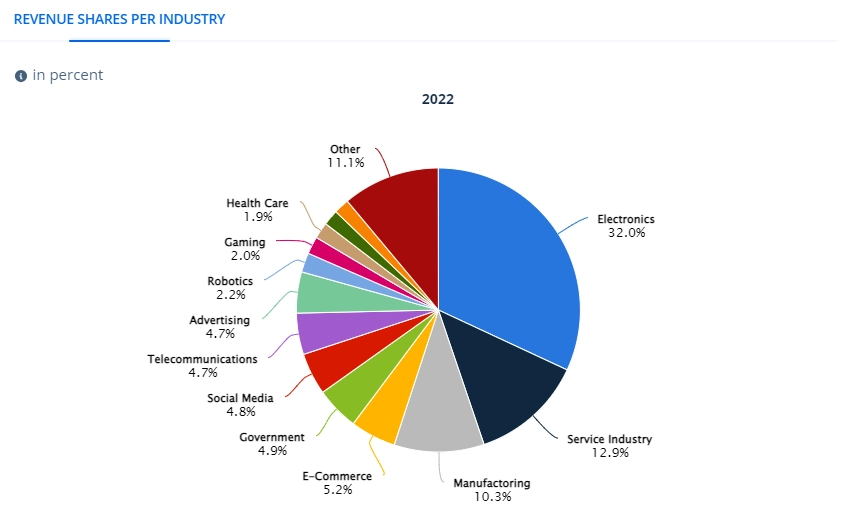
Source
By 2023, the global AR advertising market is expected to generate an astounding US$4.4B in revenue. It is growing quickly. Between 2023 and 2028, the market is expected to grow at a compound annually growth rate of 11%, putting it on track to reach US$7.5 billion. The US is leading the way, with a significant US$1,054M market volume forecasted in 2023. Globally, AR advertising is expanding rapidly, and the United States and China are also leading the way in creating creative, immersive campaigns. With the growing use of AR by marketers for in-app advertising, the market is expanding rapidly and changing how consumers interact with digital content.
4 Examples of How Brands Are Redefining Customer Experiences with AR and VR
Case Study 1: New York Times VR Campaign
The New York Times successfully addressed the challenge of attracting Gen Z readers by embracing Virtual Reality (VR) through the NYT VR platform. The initiative involved distributing Google Cardboard viewers to 1.1 million print subscribers and launching a series of VR short films, with the first film, “The Displaced,” focusing on the lives of refugee children. The app recorded over half a million downloads, distributed 1.3 million Google Cardboard sets, and garnered 1.5 million views, with an impressive average engagement time of 6 minutes per session. The campaign earned acclaim, winning the mobile Grand Prix at Cannes Lions 2016 for its ability to evoke empathy and excitement, showcasing the power of VR in journalism and storytelling.
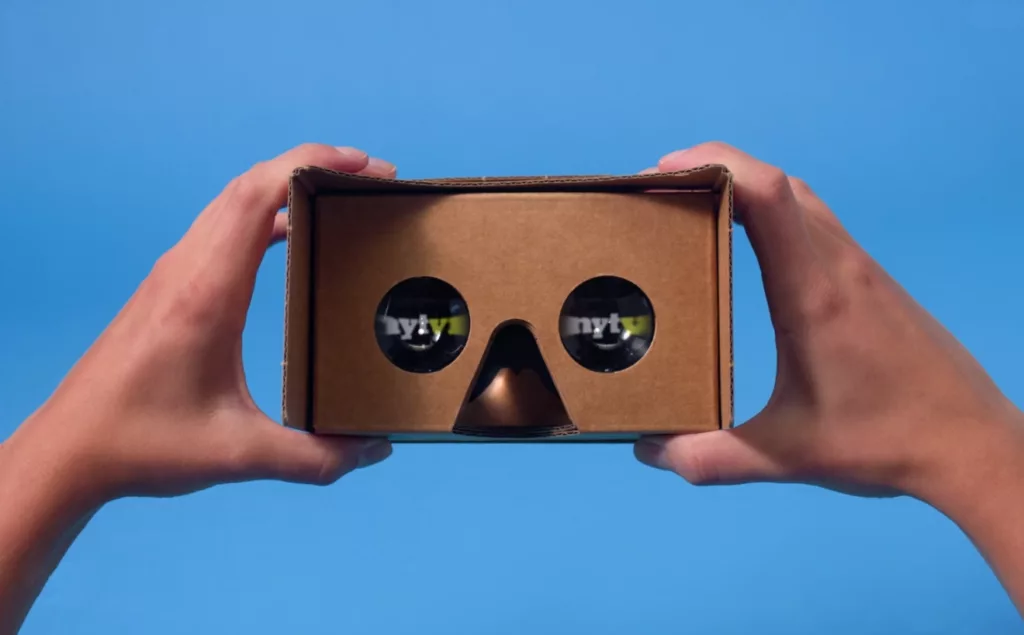
Source
Case Study 2: Pizza Hut’s AR Campaign with PAC-MAN
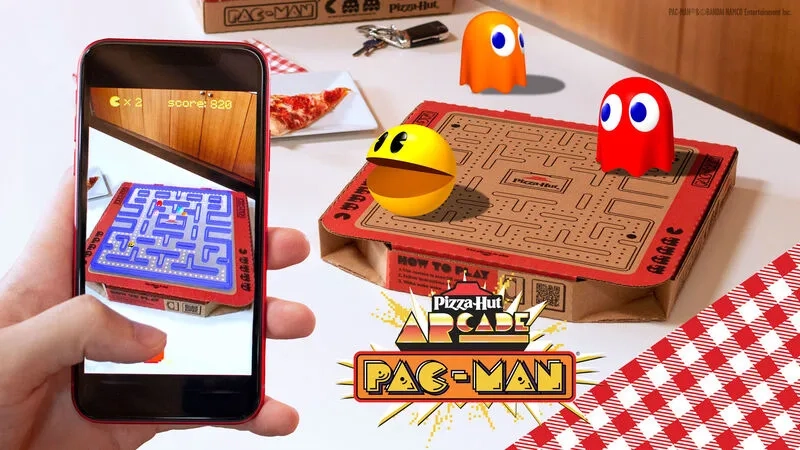
Source
To blend nostalgia with innovative technology, Pizza Hut launched a captivating augmented reality (AR) campaign featuring the iconic video game PAC-MAN. Recognizing the need to innovate in a competitive market dominated by online delivery services, Pizza Hut turned to AR to not only engage customers but also tap into the fond memories associated with its dine-in experience.
The campaign centered around a limited-edition PAC-MAN pizza box, equipped with a QR code that, when scanned with a smartphone, transformed the box into a playable PAC-MAN game. This not only added an interactive element to the pizza experience but also created a bridge between the past and the present, appealing to consumers’ sense of nostalgia.
The initiative involved collaboration with PAC-MAN maker Bandai Namco Entertainment, adding an authentic touch to the campaign. Yutaka Fuse, the head of licensing and branding at Bandai Namco Entertainment, highlighted the synergy, stating that “PAC-MAN’s design and creation was inspired by the shape of a pizza with a slice taken out of it.” This alignment made the partnership not only innovative but also culturally relevant.
The results were impressive, with the AR game recording over 1.5 million views and an average engagement time of 6 minutes per session. Moreover, the campaign extended beyond the digital realm, as Pizza Hut distributed 1.3 million PAC-MAN branded Google Cardboard sets to its print subscribers.
As Pizza Hut continued its “Newstalgia” campaign, promising to revive other favorites from its past, helped customers’ love for Pizza Hut while establishing new connections with younger generations. This case study stands as a testament to the effectiveness of leveraging AR technology to connect with consumers, enhance brand image, and drive business success.
The achievement of the campaign is outstanding: 11,260 hours played, 741 million media impression, 10.6 million Pac-Man boxes sold,
Remarkably, for the month of March, the Pizza Hut box technically surpassed the combined sales of the Nintendo Switch, Playstation 5, and Xbox Series X, making it the best-selling game console globally.
Case Study 3: The Augmented Reality and Virtual Reality Game Changer: FIFA World Cup Qatar 2022
The FIFA World Cup Qatar 2022 proved to be a historic event not only for the mesmerizing matches on the field but also for the groundbreaking integration of Augmented Reality (AR) and Virtual Reality (VR) technologies by sponsor brands.
Sponsor brands seized the opportunity to revolutionize fan engagement through AR and VR experiences. The immersive technologies offered fans a new way to interact with the tournament, turning living rooms into 3D data centers and enabling users to focus on specific players or teams. Augmented Reality enhanced coverage allowed fans to experience statistics in real-time, creating a more enriched and personalized viewing experience.
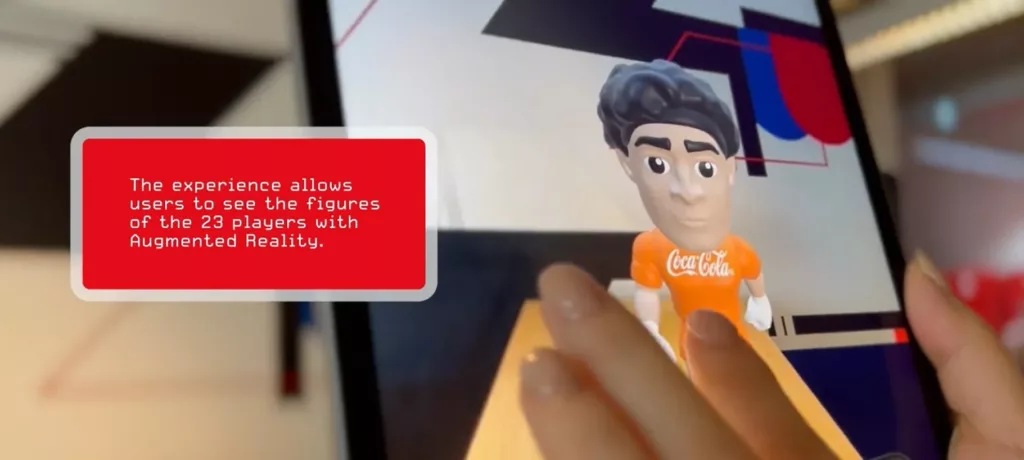
Source
Huge sponsors, including Adidas, Coca-Cola, Hyundai Motors, Qatar Energy, Wanda Group, Chevrolet, Hublot, Peacock and Qatar Airways, embraced AR to market their products. The integration of AR filters, especially on social media platforms like Snapchat and Instagram, became a trend. Brands created engaging filters targeting the youthful audience, enabling users to connect with the brand in an immersive way.
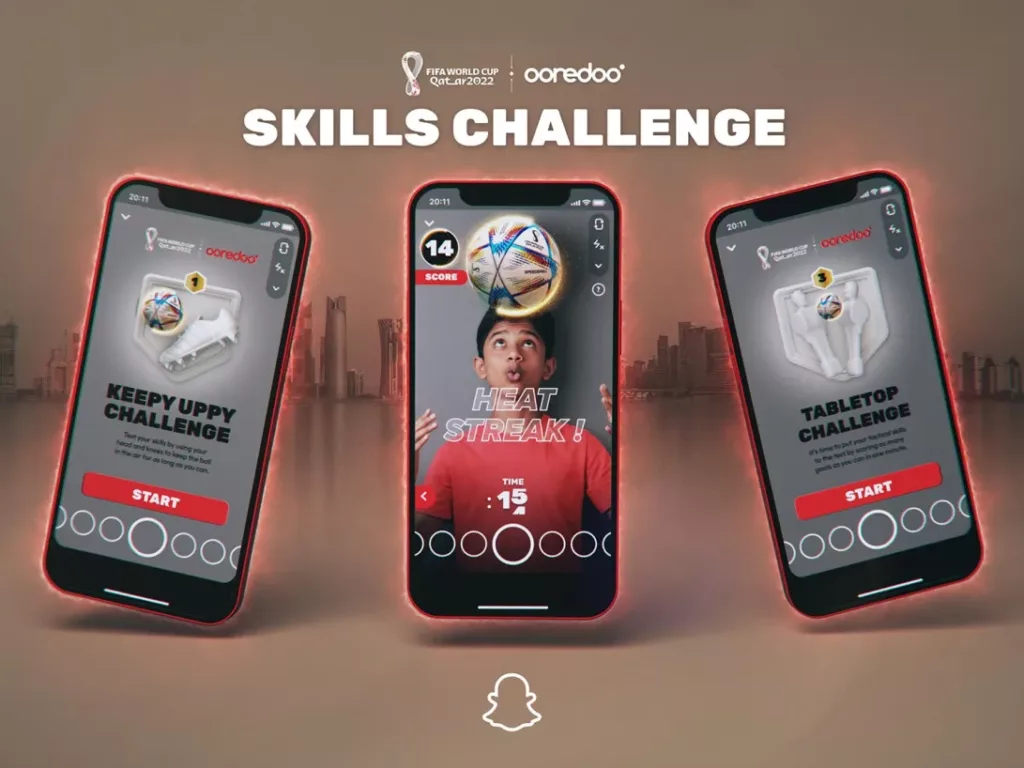
Source
AR technology extended beyond the digital realm into stadiums, facilitating easy navigation for spectators. Google glasses and AR were utilized to help fans find their seats, discover key locations within the stadium, and enhance the overall customer journey. The interactive experience not only entertained fans but also kept them engaged throughout the tournament.
Brands strategically utilized AR to enhance the shopping experience for fans. Fashion brands, in particular, leveraged AR technology to allow fans to visualize the jerseys and shoes of their favorite players in 3D. This immersive experience personalized services based on individual interests and favorite teams, leading to increased sales and brand loyalty.
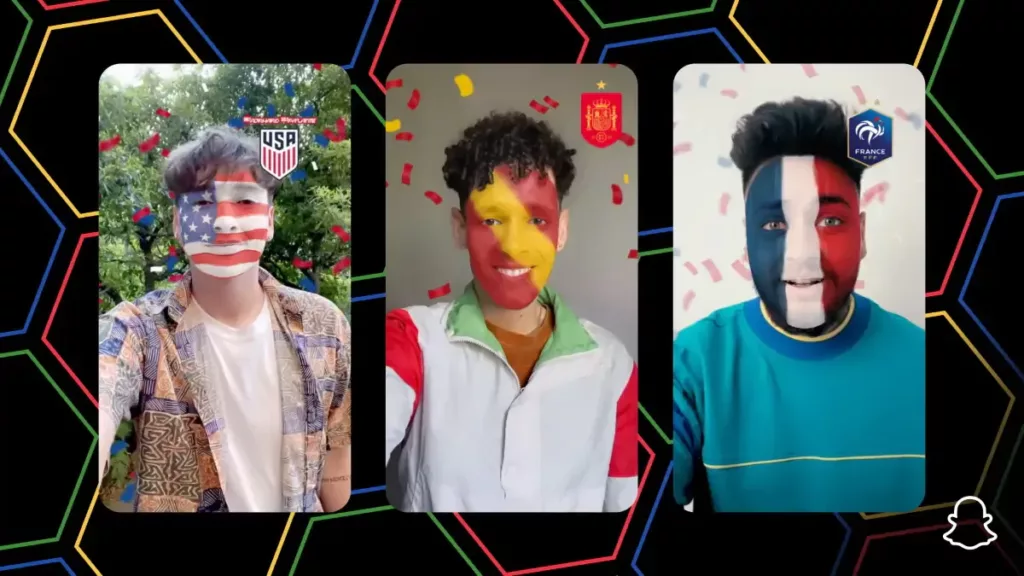
Source
The success of AR and VR integration was evident in the massive digital engagement figures. The FIFA World Cup Qatar 2022 witnessed almost 6 billion engagements on social media, with a cumulative reach of 262 billion across all platforms. Brands effectively tapped into the passion of football fans, offering them novel and interactive experiences beyond traditional marketing methods.
The FIFA World Cup Qatar 2022 marked a turning point in sports marketing with the widespread adoption of AR and VR technologies by sponsor brands. The success stories of brands leveraging AR filters, enhancing the customer journey, and executing engaging campaigns demonstrate the immense potential of these technologies in capturing the attention and loyalty of fans. As the world eagerly anticipates future sporting events, the Qatar 2022 case study stands as a testament to the transformative power of AR and VR in redefining the fan experience on a global scale.
Case Study 4: Red Bull-Ninja “Win with Ninja!” Campaign
Famous gamer Tyler “Ninja” Blevins is the star of an innovative web-based AR campaign that Red Bull has launched to step up its marketing game. The Ninja AR Lens is an immersive experience that distinguishes itself from other apps by not requiring app downloads. Users may access it with any smartphone by just hitting a button on the Red Bull website. Part of the “Win with Ninja” effort, the campaign was first introduced in Germany and invites fans to invite Ninja into their homes, take pictures with him, and enter a lottery to win the opportunity to play games with him at Lollapalooza in Chicago.
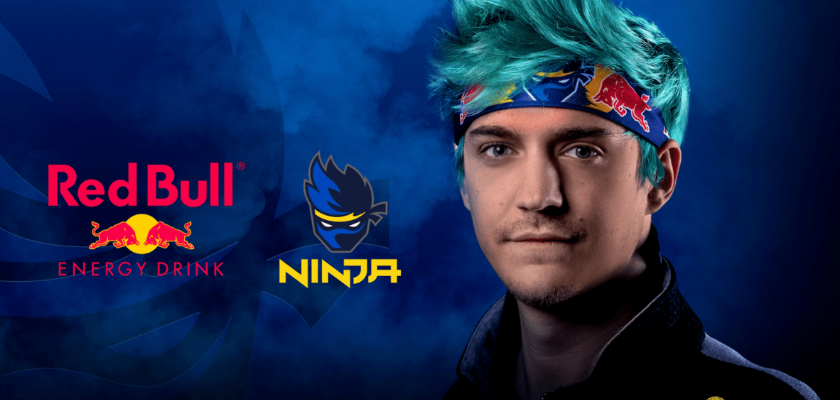
Source
The campaign offers fans an interactive avatar of Ninja seamlessly integrated into their surroundings. This user-friendly, instantly accessible AR experience aligns with Red Bull’s broader goals of increasing brand engagement and enhancing its digital presence. Ninja was one of the most followed gamers on Twitch, known for his record-breaking streams in popular games like Halo, PUBG, Apex Legends, and Fortnite.
The campaign’s success is evident in the high engagement it has achieved. Ninja’s video about the collaboration has received over 5 million views and 189,000 likes, while Red Bull’s video has been viewed more than 200,000 times. This reflects the resonance of the AR initiative and its ability to capture the attention of Ninja’s dedicated fan base.
Red Bull’s strategic move in combining AR technology with the popularity of a gaming icon like Ninja demonstrates an innovative strategy in digital marketing, creating memorable experiences and driving brand loyalty. This campaign is evidence of how the marketing industry is changing and how companies are using augmented reality to close the gap between virtual and in-person encounters. In addition to adapting to current users’ preferences, Red Bull’s use of Web-AR demonstrates how AR may be used to increase user participation, engagement, and brand awareness.
Conclusion
The integration of AR, VR, and digital marketing is revolutionizing the way brands connect with their audiences. As we have seen in the case studies presented above, these technologies have the power to create engaging experiences that capture attention, build loyalty, and drive sales.
As AR and VR continue to evolve, we can expect to see even more innovative and effective marketing campaigns appear.
[ad_2]











